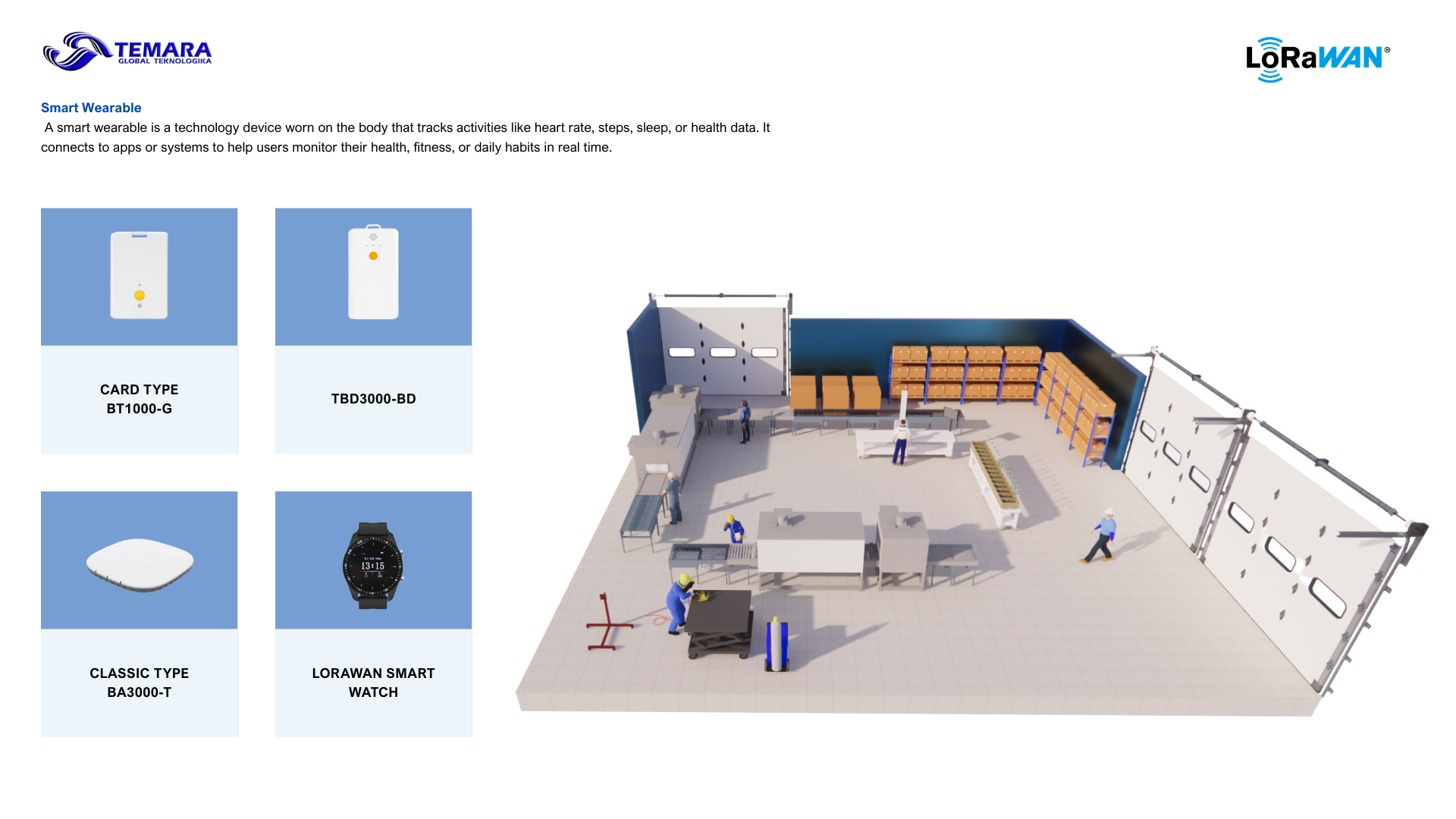Why Use Smart Wearables with IoT in the Workplace?
Smart wearables powered by IoT technology offer real-time insights into worker health, safety, and productivity. These devices are worn by employees and connect to a central system, allowing companies to monitor important data such as movement, heart rate, location, and activity levels.
Key Benefits:
-
Enhanced Safety: Instantly detect accidents like falls, overexertion, or long periods of inactivity, allowing fast emergency response.
-
Health Monitoring: Track vital signs and physical activity to prevent health risks and support employee well-being.
-
Operational Efficiency: Monitor workflows and movement patterns to optimize task assignments and reduce downtime.
-
Real-Time Location Tracking: Know where each worker is in the facility to manage space and resources more effectively.
-
Data-Driven Decisions: Use collected data to improve workplace policies, safety protocols, and performance strategies.
Device Types:
-
CARD TYPE (BT1000-G)
-
Worn like a badge
-
Tracks user presence and movement
-
-
TBD3000-BD
-
A compact wearable sensor
-
Monitors activity and sends data remotely
-
-
CLASSIC TYPE (BA3000-T)
-
Small, flat device
-
Used for tracking people or items in a facility
-
-
LORAWAN SMART WATCH
-
Worn like a regular smartwatch
-
Tracks heart rate, steps, and sends health data to the system
-
By integrating smart wearables into the workplace, businesses can create a safer, more responsive, and more efficient environment that protects their people while improving operations.
Why Use Smart Wearables with IoT in the Workplace?
Smart wearables powered by IoT technology offer real-time insights into worker health, safety, and productivity. These devices are worn by employees and connect to a central system, allowing companies to monitor important data such as movement, heart rate, location, and activity levels.
Key Benefits:
-
Enhanced Safety: Instantly detect accidents like falls, overexertion, or long periods of inactivity, allowing fast emergency response.
-
Health Monitoring: Track vital signs and physical activity to prevent health risks and support employee well-being.
-
Operational Efficiency: Monitor workflows and movement patterns to optimize task assignments and reduce downtime.
-
Real-Time Location Tracking: Know where each worker is in the facility to manage space and resources more effectively.
-
Data-Driven Decisions: Use collected data to improve workplace policies, safety protocols, and performance strategies.
Device Types:
-
CARD TYPE (BT1000-G)
-
Worn like a badge
-
Tracks user presence and movement
-
-
TBD3000-BD
-
A compact wearable sensor
-
Monitors activity and sends data remotely
-
-
CLASSIC TYPE (BA3000-T)
-
Small, flat device
-
Used for tracking people or items in a facility
-
-
LORAWAN SMART WATCH
-
Worn like a regular smartwatch
-
Tracks heart rate, steps, and sends health data to the system
-
By integrating smart wearables into the workplace, businesses can create a safer, more responsive, and more efficient environment that protects their people while improving operations.
